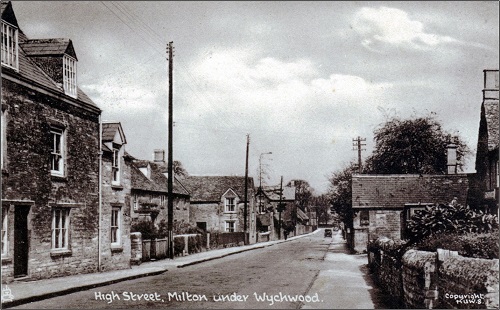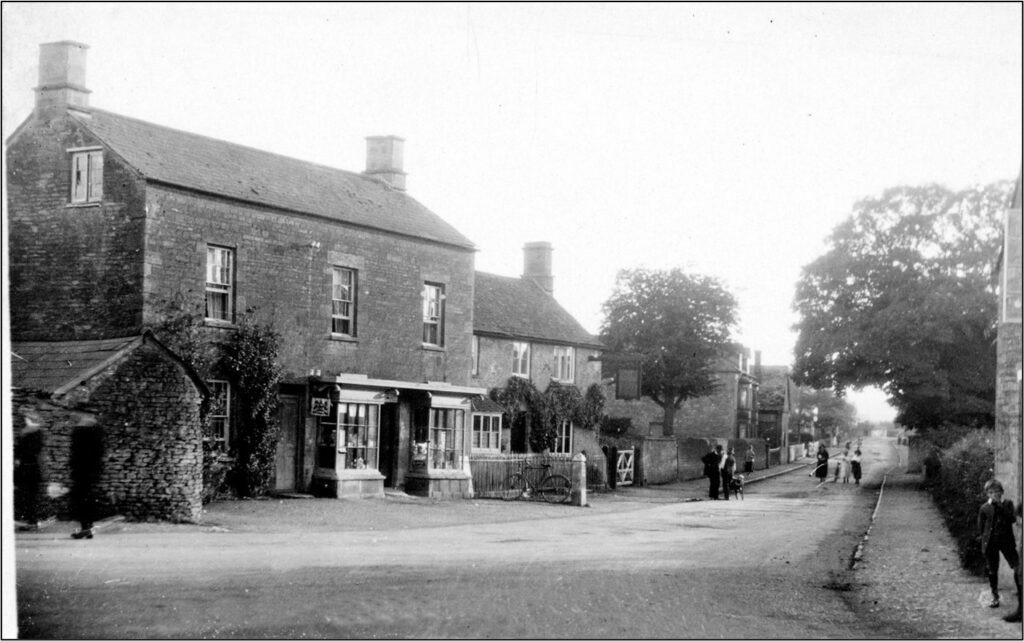
The High Street, as its name suggests, is one of the village’s key streets. Along with the Shipton Road it forms the spine to the village. It runs from the village centre where Shipton Road, Church Road and High Street meet and continues in a southerly direction, coming to an end at a small cottage at 114 High Street (figure 9). This cottage sits opposite the newly built estate (2019-21) of St Jude’s Meadow (figure 33). The road then continues towards Upper Milton.
The High Street has not always been known as such. It was once known as “Dick’s Lane” or “Upper Dick;s Lane” but at some point in the later 18th Century with the growing prosperity of Milton there must have arisen a desire to raise the status of this increasingly important street – and of the village – and it was re-named High Street. The High Street is traditionally the most significant street in a town or village and is usually the principal shopping street. Whilst Milton’s High Street has no shops today it was once well provided with shops and services. More of which below.
It is a long unusually straight road, and you can stand at the Village Green and glimpse the recently added houses of St Jude’s Meadow at the far end. Its other virtue for local inhabitants is that it is not a main thoroughfare. The main roads linking Charlbury, Burford, Stow, Chipping Norton and Shipton-under-Wychwood are all outside the village, and other than accessing Upper Milton, our High Street is generally only used by local traffic.
Another characteristic is that, unlike many other High Streets, its houses and other buildings, with a few exceptions, are generally set back from the street line. This gives many of the houses generous front garden space, and thus presenting a generally green and open aspect to the street.

Introduction | Before the 19th Century | The 19th Century | Shops and Pubs | Religion | 20th and 21st Centuries | Article Intro

